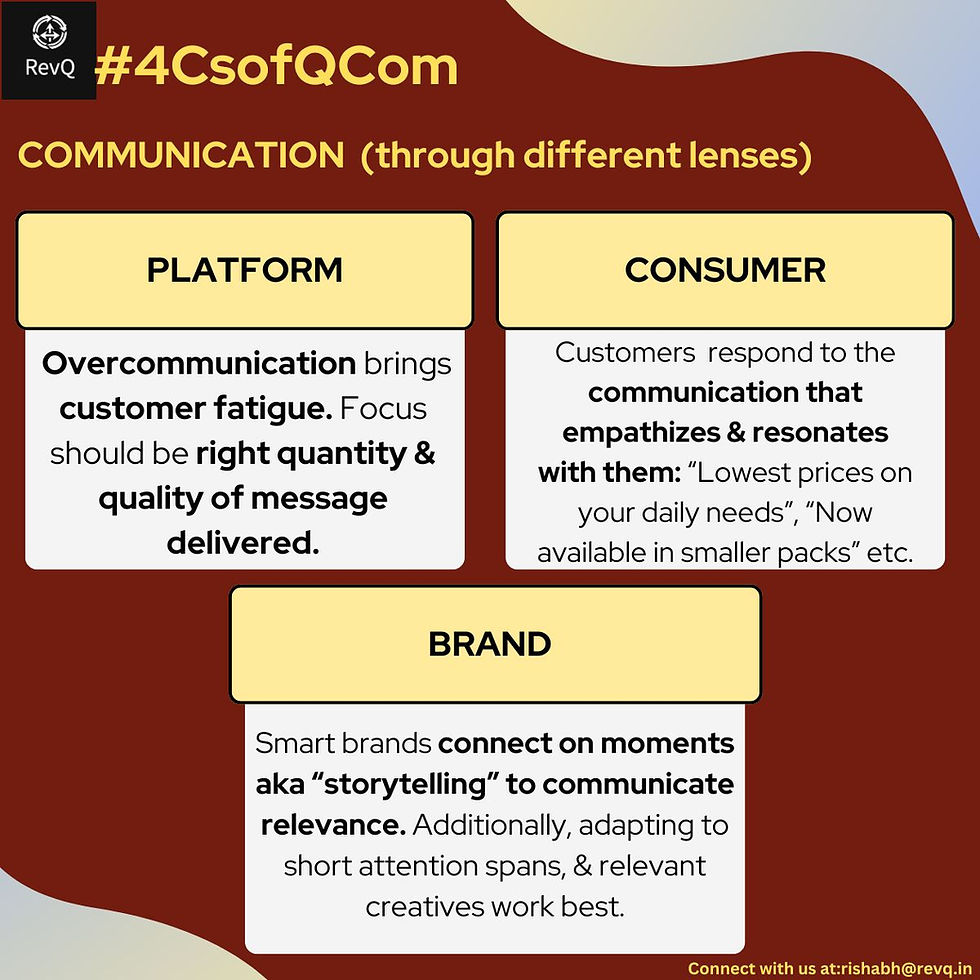"Segmentation" in #STPofQcom
- Sankalp Asthana
- 3 days ago
- 2 min read
In our previous post, we introduced STP and its definition within the realm of Q-Com. Let us examine "Segmentation" in the STP framework from various perspectives.
"SEGMENTATION" in Q-Commerce-
Consumer POV:
The rapidly evolving digital landscape has significantly changed how customers segment their needs on Q-Commerce apps compared to the era of GT or MT.
Today, customers are driven by an impulse to purchase items that can be delivered within 10 minutes, making delivery speed a crucial factor in their decision-making. Additionally, each user's "wants" are unique, leading to diverse demands.
These demands are constantly shifting, which influences how customers categorize their needs and seek the best solutions. This can involve a variety of products, such as daily groceries, party snacks, different package sizes, delivery speed, and current offers and deals.
Brand POV:
Brands conduct in-depth analyses of customer buying behavior and examine various touchpoints to answer the crucial question of why certain product assortments in specific areas (pin codes) experience high demand and quickly go out-of-stock (OOS), while others fail to attract consumer attention and generate demand. Although OOS is one factor, brands monitor different customer segments, considering demographics, psychographics, behavior, and geography. This analysis helps them tailor their strategies to meet personalized needs.
Understanding the characteristics of the Q-Com platform and its users is essential for making informed decisions regarding pricing, SKU sizes, and the variety of products offered.
At this stage, brands that effectively segment their customers on Q-Com can distinguish themselves and drive purchase orders (POs).
Platform POV:
Effective communication is essential in this context. It is crucial for platforms in the Q-Commerce sector to thoroughly analyze various behavioral patterns that emerge from different customer types and respond to their urgent needs.
Customer behavior is not the only factor that plays a significant role in segmentation; external elements like purchase history, time of day, and even weather conditions can also have an impact.
For example, behavioural segments can include college students ordering late-night food, office workers purchasing quick lunch add-ons, or parents buying essentials during school hours. Interestingly, the same customer may fall into different cohorts or segments depending on the time of day.
Platforms that can segment users in real-time based on these factors can enhance visibility and ensure the right products are placed at the right time. This approach allows for hyper-personalised offerings and notifications, ultimately improving the customer experience.
Did you learn something new today? This was our series of #STPofQcom to understand how "Segmentation" of the STP framework has been adapted in Q-com.




